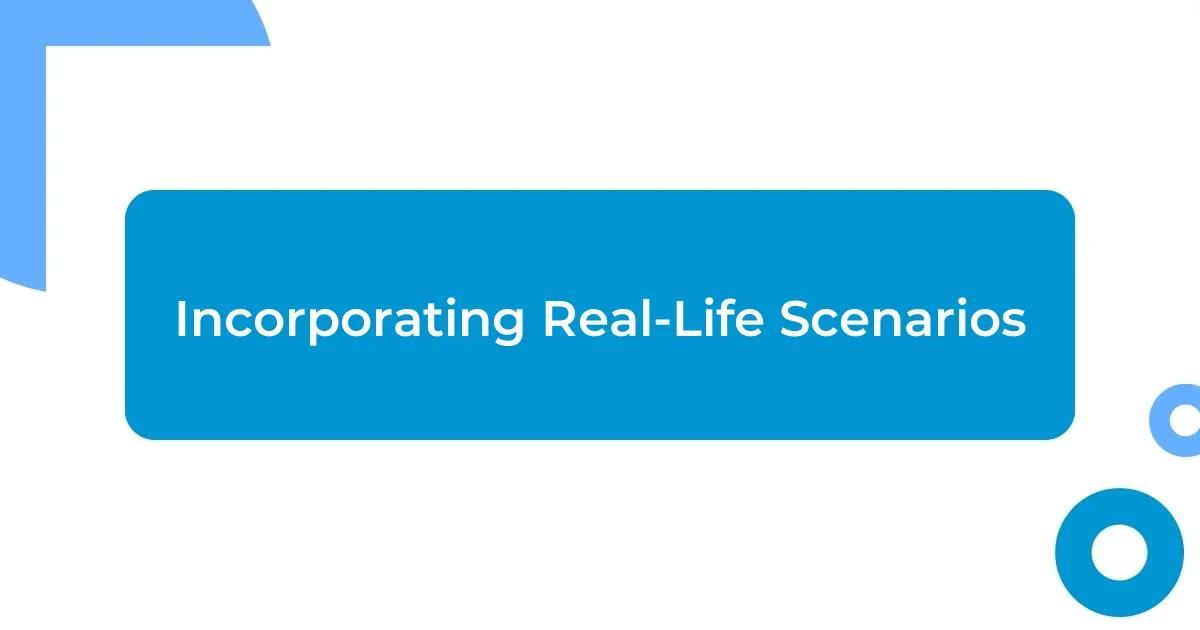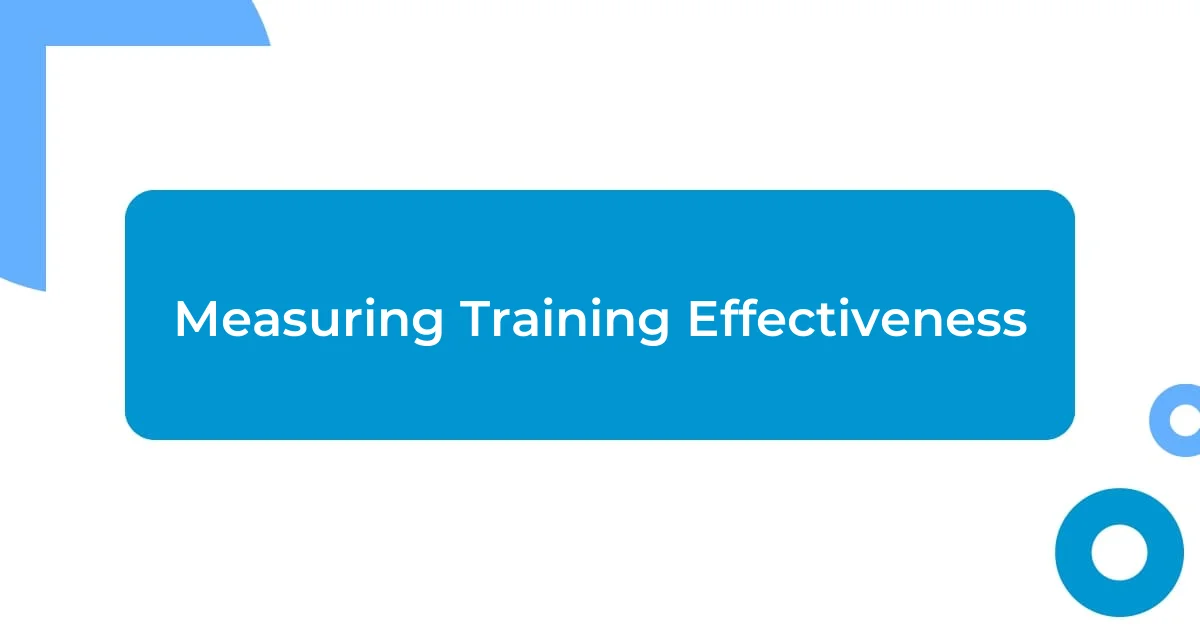Key takeaways:
- Emphasizing the importance of compliance creates a culture of integrity and preparedness within the workplace, transforming stress into confidence during audits.
- Incorporating real-life scenarios and open communication enhances understanding of compliance, fostering a collaborative team environment where learning is a shared responsibility.
- Continuous improvement through feedback and adaptation of training programs ensures compliance education evolves with team needs, boosting engagement and confidence in handling regulations.

Understanding Compliance Importance
Compliance might sometimes feel like just another box to check, but to me, it’s the bedrock of a trustworthy workplace. When everyone understands the rules and regulations, it fosters a culture of responsibility and integrity. Have you ever been in a situation where a lack of compliance led to chaos? I have, and it was a stark reminder of why following the rules matters.
I vividly remember a time when we faced a regulatory audit. Initially, our team was stressed, thinking about potential repercussions, but because we had established robust compliance practices, we turned that stress into confidence. The relief we felt after realizing that our thorough processes had prepared us for scrutiny was palpable. It’s moments like these that highlight just how essential compliance is not just for avoiding penalties but for reinforcing our commitment to ethical standards.
When I approach compliance education, I often reflect on the bigger picture—what it means for our clients and community. How can you explain the importance of compliance without tying it to real-world implications? I share stories of how our adherence to regulations has protected our clients from harm and those moments reinforce that compliance isn’t just policy—it’s a vital part of our mission.

Identifying Team Compliance Needs
Identifying the compliance needs of my team is crucial in creating a safe and accountable work environment. I often start by conducting a comprehensive assessment of our current practices and pinpointing any gaps. In one instance, I realized our remote team struggled with data privacy regulations. This discovery prompted me to implement targeted training, and the excitement to learn together not only engaged everyone but also built a stronger connection within the team.
I also lean heavily on open communication during one-on-one check-ins to gain deeper insights into their specific compliance challenges. For example, I remember a colleague hesitating to voice concerns about contract transparency, fearing backlash. By encouraging discussions on compliance openly, I helped foster an environment where team members feel secure sharing vulnerabilities. This step is vital, as it helps us address potential issues head-on and reinforces the concept that compliance is a team effort.
Finally, benchmarking against industry standards offers a clear map of where we stand. Whenever I compare our practices with those of leading companies in our field, it sparks enlightening conversations within the team. This process allows for shared learning experiences, revealing areas where we can improve and innovate together. Creating a dialogue around these comparisons turns compliance into a collaborative journey rather than a solitary obligation.
| Methods for Identifying Compliance Needs | Description |
|---|---|
| Assess Current Practices | Conduct assessments to find gaps in compliance understanding. |
| Open Communication | Encourage team discussions to uncover individual compliance challenges. |
| Benchmarking | Compare practices against industry standards for improvement opportunities. |

Developing Targeted Training Programs

Developing Targeted Training Programs
Creating targeted training programs has been a game-changer for my team. I remember the time I introduced an interactive online module specifically focused on the nuances of compliance policies. The participants engaged deeply, and I could see their eyes light up as they connected the concepts to real scenarios. This approach not only made the learning experience enjoyable, but it also empowered them to see compliance as a valuable tool rather than a mere requirement.
By addressing specific compliance areas relevant to our team’s roles, I’ve found that everyone feels more equipped and motivated to adhere to regulations. Here’s how I develop these programs:
- Assess Training Needs: Gather input from team members about which compliance areas they find challenging.
- Incorporate Real-Life Examples: Use case studies that relate to our business, making the training relatable and practical.
- Utilize Varied Formats: Offer a mix of workshops, online modules, and discussions to cater to different learning preferences.
- Solicit Feedback: After each session, I encourage feedback to continuously improve the program and adapt to evolving needs.
In one training session, I shared a personal story about a compliance oversight that led to a costly mistake in a previous job. The room was silent as I explained the repercussions; it hit home for many. Once they understood the potential fallout, I noticed a shift in attitude—suddenly, they were not just passive spectators but active participants trying to grasp the importance of compliance in our daily operations. This emotional connection can truly transform how the team approaches compliance, reinforcing that we’re all in this together.

Incorporating Real-Life Scenarios
One effective way I incorporate real-life scenarios in compliance training is by sharing relatable stories from my own career. For instance, I vividly recall a time when I overlooked a critical data protection procedure while managing a project. The fallout was eye-opening; not only did it impede our operations, but it also shook my confidence and the trust of my clients. When I narrated this experience to my team, I could see their expressions change; they were genuinely engaged. This connection made them realize that compliance isn’t just a set of rules—it’s integral to our success.
I also encourage my team to bring their own stories to the table during training sessions. One team member spoke about a narrow escape from a potential compliance breach while negotiating a contract. It was fascinating to hear how their quick thinking prevented complications. I often ask, “What would you have done in that situation?” This type of dialogue fosters a sense of camaraderie and reinforces the idea that we can all learn from each other’s experiences. Sharing these real-life situations not only enhances understanding but also personalizes compliance, making it feel less like a chore and more like a shared responsibility.
Incorporating these scenarios has an added benefit—the emotional resonance. Each story, whether it’s mine or one from the team, carries a lesson that lingers long after the training session ends. It compels everyone to reflect on their own choices in similar situations. When I ask them to picture themselves facing those challenges, I can see the wheels turning in their minds. This shared learning environment turns compliance concepts into powerful conversations, highlighting that we all play a vital role in ensuring our team’s integrity and accountability.

Utilizing Technology for Training
Utilizing technology in compliance training offers a remarkable opportunity for engagement and retention. Recently, I introduced a gamified training platform that turned compliance learning into a fun, competitive experience. I was pleasantly surprised by how much more involved my team became. Suddenly, they weren’t just learning; they were competing to see who could accumulate the most points by answering quiz questions correctly. It reminded me how a little bit of playfulness can transform a seemingly tedious topic into something that resonates.
In addition to gamification, I’ve leveraged video conferencing tools to host live Q&A sessions after each module. I recall one instance where a team member raised a query about a complex regulation that had been causing confusion. The collaborative nature of these sessions allowed us to dissect the issue together, and what really struck me was the genuine concern in their voice. This heartfelt conversation fostered an environment where questions are welcomed, ultimately reinforcing the idea that compliance is a team effort rather than an isolated obligation.
Moreover, I frequently tap into collaborative tools like shared document platforms, enabling real-time feedback and brainstorming. It’s fascinating to watch how ideas blossom when everyone contributes their insights. I often ask, “What tools could help us improve compliance oversight?” The diverse responses not only trigger valuable discussions but also empower everyone to feel invested in our compliance journey. I deeply believe that technology, when used effectively, serves not just as a means of learning but as a bridge that connects us, uniting our efforts to uphold compliance standards.

Measuring Training Effectiveness
Measuring training effectiveness is crucial in ensuring that the lessons on compliance resonate with my team. One approach I’ve taken is to evaluate knowledge retention through pre- and post-training assessments. I remember a session where a team member excitedly shared how much he had learned. His score jumped by over 30% after just one module, and seeing his pride was a gratifying moment that reinforced my belief in this method.
Beyond tests, I also gauge training impact through real-world application. After one training on data privacy, I encouraged the team to share situations where they applied what they learned. One member mentioned how she felt more confident bringing up concerns during a client meeting, knowing the importance of protocol was now crystal clear to her. That moment made me realize how effective training ignites a proactive compliance culture, where team members feel empowered to take action.
I also find it incredibly valuable to solicit feedback through anonymous surveys after training sessions. This past quarter, I was amazed to read some thoughtful comments highlighting areas for improvement. One suggestion was to add more interactive elements, which I promptly implemented in our next training. This continuous feedback loop not only refines our training process but also nurtures an environment where everyone feels heard and invested in learning. How do you measure the effectiveness of your training? The insights I’ve gained remind me that compliance education is an evolving journey.

Continuous Improvement for Compliance Education
I’ve always believed that compliance education shouldn’t be static; it needs to evolve continually. One way I encourage this is by organizing quarterly review meetings where we re-evaluate our training content. I recall one particular session where a team member suggested we include more scenario-based exercises. This sparked a lively discussion, and we ended up reworking our approach entirely. It was exciting to see everyone’s enthusiasm, as they felt their voices were truly heard.
The emotional impact of ongoing improvement cannot be overstated. I remember a colleague who initially found compliance training overwhelming. After revamping our program, she approached me with palpable excitement, sharing how she felt more comfortable engaging with complex regulations. It was a testament to how a few adjustments not only enhanced understanding but also fostered confidence. This kind of transformation keeps me motivated and reaffirms the necessity of always seeking ways to improve our compliance education.
Incorporating regular feedback from my team is also essential for continuous improvement. I make it a point to follow up after each training session to catch up over coffee and discuss their experiences. One conversation stands out; a team member shared how some compliance elements felt disconnected from their daily tasks. Together, we brainstormed how to weave those elements into real situations, tailoring the program to their needs. Have you ever had those lightbulb moments when simple adjustments make all the difference? It’s these interactions that drive home the importance of making compliance education a dynamic and responsive process.














